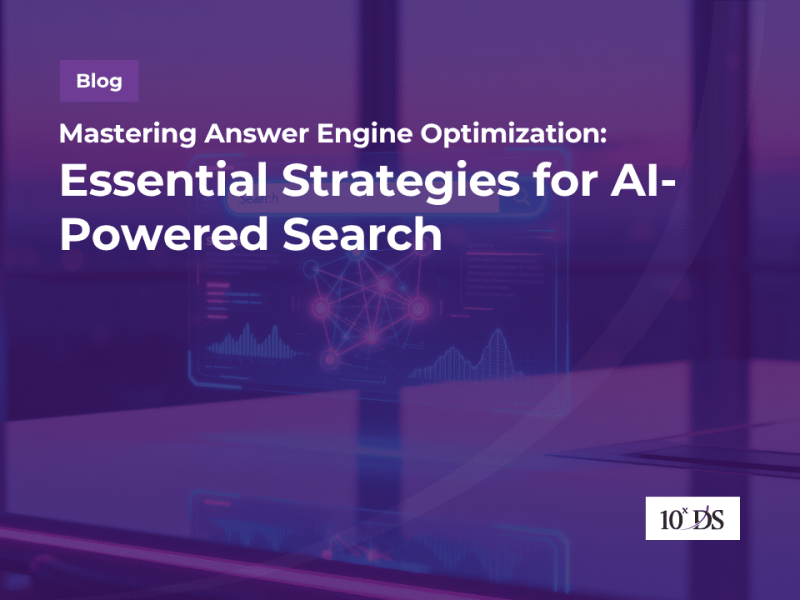
AI and KYC Automation in Banking: Revolutionizing Risk Reduction
In today’s hyper-connected financial ecosystem, where digital onboarding and instant transactions are the norm, customer verification has become more critical than ever. Know Your Customer (KYC) is no longer a static compliance exercise—it’s a dynamic, data-driven process that protects financial institutions from fraud, money laundering, and regulatory penalties.
With rapid advances in AI for KYC and automation for banking, institutions now have the opportunity to turn compliance into a competitive advantage. But implementing AI-driven KYC successfully requires more than technology—it demands strategy, governance, and execution excellence. According to a detailed report by MarketsandMarkets, the global AI in finance market is experiencing rapid acceleration, projected to surge from USD 38.36 billion in 2024 to an impressive USD 190.33 billion by 2030, growing at a robust compound annual growth rate (CAGR) of 30.6 %. This exponential rise highlights how financial institutions across the globe are increasingly embracing AI-driven solutions for functions like fraud detection, risk assessment, credit scoring, and KYC automation, underscoring the critical role of AI for KYC and compliance innovation in shaping the future of banking.
This blog explores how financial institutions can strategically implement AI for KYC to reduce risk, improve compliance, and enhance operational efficiency.
Why AI-Driven KYC Automation Matters?
Traditional KYC processes rely heavily on manual reviews, paper documentation, and periodic risk checks. They’re slow, inconsistent, and resource-intensive. In contrast, AI for KYC enables banks to process vast volumes of customer data in real time—analysing IDs, detecting anomalies, and updating risk profiles continuously.
KYC automation for banking integrates AI, Optical Character Recognition (OCR), Natural Language Processing (NLP), and machine learning to reduce onboarding time, minimize human error, and ensure regulatory alignment. Beyond efficiency, the bigger value lies in risk reduction—identifying suspicious patterns before they escalate into compliance failures.
When done right, AI-driven KYC automation delivers:
- Faster onboarding without compromising due diligence
- Real-time monitoring of high-risk activities
- Data-driven decision making with fewer false positives
- Regulatory compliancethat’s traceable and explainable
Leveraging Technology for Enhanced Customer Verification and KYC Automation for Banking
As money laundering tactics become increasingly sophisticated, manual KYC processes are no longer adequate. Technology is no longer an option but a necessity for enhancing accuracy, speed, and consistency in KYC risk management, while simultaneously reducing operational costs. The adoption of KYC automation for banking is critical in this evolution.
- Speed & Scalability: Onboarding customers manually is slow and prone to error. KYC automation for Banking can accelerate identity verification, document processing, address, beneficial ownership checks, etc. This reduces backlog and exposure, improving risk posture.
- False Positives / False Negatives Management: Traditional rule-based systems often generate too many false positives. Machine learning models, advanced AI-driven risk scoring and anomaly detection can reduce this noise ensuring that focus is on real risks.
- Real-Time / Dynamic Monitoring: When a customer’s behaviour, risk status or external environment changes, AI-powered monitoring helps detect threats in near real time rather than waiting for periodic.
- Better Use of Resources: Automation frees up compliance teams to focus on high-risk issues rather than routine checks. This lets the bank optimize its operational cost and reduce errors due to fatigue or overload.
- Regulatory Compliance & Reporting: AI systems can help ensure that changes in regulations are integrated into KYC workflows, maintain audit logs, generate reports, sense adverse media etc. This reduces legal risk.
Best Practices for Implementing AI-Driven KYC Automation
To unlock the full potential of AI in Know Your Customer (KYC) processes, financial institutions need more than just advanced algorithms—they need a well-structured implementation strategy that blends technology, compliance, and human expertise. Below are the key best practices to ensure a successful rollout of AI-driven KYC automation:
1. Establish Robust Data Governance
AI models are only as effective as the data they’re trained on. Financial institutions must create a strong data governance framework that ensures data quality, integrity, and security.
- Data accuracy and completeness: Regular validation and cleansing of customer data are crucial to prevent false positives and regulatory breaches.
- Ownership and accountability: Define clear responsibilities for data stewardship, including who can access, modify, or use sensitive information.
- Security protocols: Implement encryption, anonymization, and multi-layer access controls to protect customer identities and prevent data breaches.
2. Ensure Model Transparency
Regulators increasingly demand explainability in AI models. Institutions should use interpretable algorithms and maintain documentation that explains how decisions are made.
- Interpretable models: Use algorithms that can be easily audited and explained to regulators, such as decision trees or hybrid explainable AI systems.
- Documentation and traceability:Maintain a clear record of how the AI model was developed, what data it uses, and the rationale behind its risk assessments.
- Bias detection: Regularly test models to identify and mitigate any unintentional bias that could lead to unfair treatment of customers.
- Human validation: Ensure that AI recommendations are reviewed by compliance experts before making critical decisions, especially in edge cases.
3. Integrate with Core Banking Systems
KYC automation works best when it’s not a standalone system but part of a connected ecosystem.
- Seamless integration: Connect AI-driven KYC tools with core systems such as CRM, transaction monitoring, and Anti-Money Laundering (AML) solutions to maintaina single source of truth.
- Unified customer view: Centralizing data helps institutions assess customer risk holistically across products, regions, and transactions.
- Interoperability: Ensure Application Programming Interface (API)s and data pipelines support smooth communication between AI platforms and existing banking infrastructure.
- Real-time alerts: Integrations enable instant updates and alerts when customer risk profiles change, allowing for proactive decision-making.
4. Conduct Regular Audits and Updates
AI systems are dynamic—they learn, evolve, and must be recalibrated over time.
- Ongoing monitoring: Continuously track model performance using accuracy, precision, and recall metrics.
- Periodic audits: Conduct both internal and third-party audits to verify compliance and model reliability.
- Adapt to regulatory changes: As global KYC and AML regulations evolve, AI models should be retrained or updated to stay compliant.
- Update fraud detection patterns: Incorporate new data trends and behavioural indicators to recognize emerging fraud tactics or identity threats.
5. Train Compliance Teams
Even the most advanced AI can’t replace human judgment in compliance oversight.
- Skill development: Train compliance officers and analysts to interpret AI-generated insights and differentiate between genuine red flags and false alarms.
- Collaborative decision-making:Establish workflows where AI outputs are reviewed and validated by human experts before final action.
- Awareness sessions: Conduct regular workshops to keep teams informed about model updates, new regulatory frameworks, and ethical AI practices.
- Feedback loops: Encourage compliance teams to provide feedback on AI accuracy and usability, which helps refine model performance over time.
Future of AI-Driven KYC
The future of KYC automation for banking is shaped by three key trends:
- Agentic AI & Autonomous Compliance: Intelligent agents that manage end-to-end KYC workflows—onboarding, verification, reporting—without human intervention.
- Federated Learning: Enables multiple banks to train shared AI models without exposing customer data, enhancing both privacy and performance.
- Real-Time Adverse Media Monitoring: Advanced NLP models scan millions of data points—news, social media, blogs—to detect risk signals early.
As AI evolves, KYC will shift from being a “reactive compliance function” to a predictive risk intelligence system.
Conclusion: A Strategic Imperative for the Future
Many perceive KYC best practices as a completed compliance task, often leading to failure because institutions treat it as a static checklist rather than a dynamic, real-time risk intelligence system. Onboarding data frequently remains isolated from ongoing risk signals, rendering KYC a superficial exercise driven by regulation rather than genuine customer understanding. Compliance teams can become overwhelmed by an influx of alerts that generate noise instead of meaningful insights, leading to alert fatigue and ultimately, missed risks.
To address this critical challenge, organizations must fundamentally shift their perspective from viewing KYC as mere paperwork to embracing it as continuous, actionable intelligence. Breaking down internal silos and integrating customer data, transaction monitoring, and external risk feeds in real time is paramount. Compliance teams require intelligent tools that effectively filter information and enable swift, impactful decisions. Success should be measured by actual risks detected and mitigated early, not merely by the number of forms completed. This transformative approach demands both operational change and a significant shift in mindset; without it, KYC will remain a weak and insufficient defence against financial crime. AI can automate routine tasks, reducing the time and cost associated with KYC processes.
Talk to our experts to learn more.


